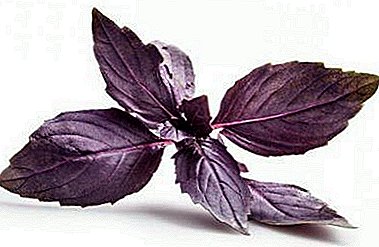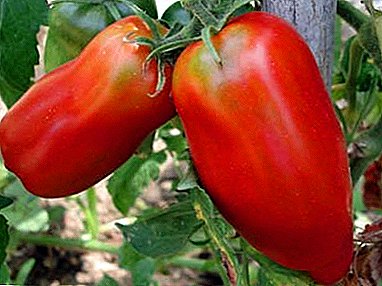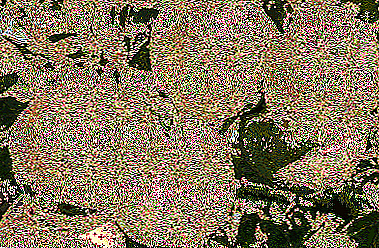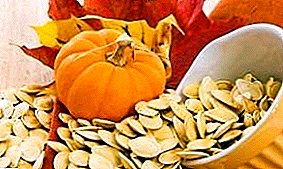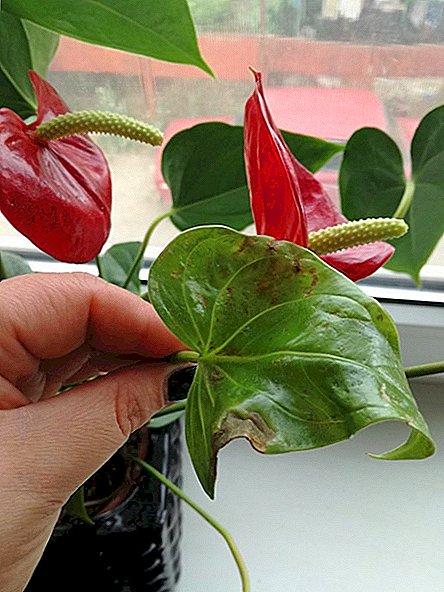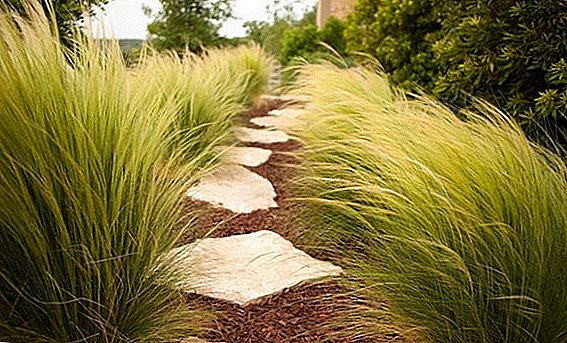 In landscape design uses a lot of plants, including the most spectacular. But the seemingly inconspicuous varieties can decorate any author's composition or make a small “touch” in the design of the site. Consider what is remarkable feather, as well as how to plant and care for him.
In landscape design uses a lot of plants, including the most spectacular. But the seemingly inconspicuous varieties can decorate any author's composition or make a small “touch” in the design of the site. Consider what is remarkable feather, as well as how to plant and care for him.
Description
This is a perennial grass from the family of cereals, growing in steppe, mountain and semi-desert regions. It is well received in a temperate climate.
As it grows near short roots, a thick turf is formed, without a creeping rhizome. On straight stems 30-80 cm high (less often up to 1 m), hard leaves with narrow longitudinal plates are visible. Often they are twisted into a tube, but flat sheets for a feather grass are not uncommon.  Numerous inflorescences are small racemes. Inside rather large (1-2.5 cm) spikelets - one flower, covered up to bloom with two scales: long outer and inner, which embraces the fruit in the form of a seed, and at the end of its ripening it disappears.
Numerous inflorescences are small racemes. Inside rather large (1-2.5 cm) spikelets - one flower, covered up to bloom with two scales: long outer and inner, which embraces the fruit in the form of a seed, and at the end of its ripening it disappears.
The flowering period is in May - June. Intense flowering begins on the 2-3rd year after planting (some rare varieties may please the eye and 4 years after planting).
Important! Feather grass is a strong allergen. Therefore, if you or loved ones have a predisposition to allergies or asthma, it is better to refuse such a “decor”.Reproduction occurs through the wind, which spreads the seeds, or by artificial division of the bush.
To evaluate the feather grass, look at the photo of this plant. He has another feature.  The fact is that with the onset of darkness, when dew protrudes, the grass seems to be hiding: the twisted lower knee begins to straighten, thereby pressing the stem into the ground.
The fact is that with the onset of darkness, when dew protrudes, the grass seems to be hiding: the twisted lower knee begins to straighten, thereby pressing the stem into the ground.
The weevil also sinks into the ground, clinging to the soil with small bristles. In the morning, the stem straightens again, and some of the kernels remain in the ground.
Main plant species
By itself The biological genus Kovyl is very numerous - There are about 300 species, about a hundred of which tolerate heat very well. Let us dwell on the most popular lines that are readily accepted in our area.
Pinnate
The plant is average in height from 0.3 to 1 m. Bare, smooth stems are covered with a short down. They contain rare narrow (0.5-2 mm) leaves, slightly pointed at the edges. They are a bit curled and rough to the touch. 
Did you know? You can also see the feathery feather-grass in the glades of Western Europe. But the largest are the Hungarian massifs of this species - there it grows throughout the country.The inflorescence can reach up to 20-25 cm in length and 5-7 cm in width. They contain from 6 to 20 spikelets with upper scales of 3-4 and lower ones 1.5 cm. Brownish awn is bent by knees twice. Below it is completely naked, short hairs are raised higher.
Cirrus feathery blooms in May and early June. One month after that, fruiting begins, when pointed grains are seen. It is excellently accepted on loose and non-acidic soils with good drainage - the plant does not tolerate overmoistening.
Beautiful
Low (up to 70 cm) plant with many stems, sometimes pubescent below the nodes. Bottom leaves are narrow, dark green in color, the upper go without the characteristic "gun".  Inflorescence - compact raceme panicleSeemingly a little tight. The usual length of the bent spine of a reddish color is 20–30 cm. Spikelets 4.5–7 cm bear one small flower (they are rarely larger than 4 mm). Across the spine are short 3-mm hairs.
Inflorescence - compact raceme panicleSeemingly a little tight. The usual length of the bent spine of a reddish color is 20–30 cm. Spikelets 4.5–7 cm bear one small flower (they are rarely larger than 4 mm). Across the spine are short 3-mm hairs.
Important! If the construction of an alpine slide is not included in the plans, but you still want to decorate the plot, you can mulch the soil between the feather grass plantings. For this suitable claydite or small crushed stone.Flowering period: mid-May - early June.
The line got its name for good reason, the plant is really noticeable. In addition, it tolerates frost well, it has been established that the "lower limit" for it is -22 ... -23 degrees. Rocky areas of low mountains are a natural habitat, and gypsum or calcareous soils are best suited for cultivation. Unfortunately, such a feather grass becomes a rarity - this species is listed in the Red Book of the Russian Federation, and in many other documents it is listed as vulnerable.
The finest
Rare perennial with thin but durable stems, reaching 40-70 cm in height. The leaves are also hard, narrow and rough to the touch (due to tightly located bristles).
Thick, soft panicles usually grow up to 10-30 cm. They contain lanceolate spikelets with a violet tinge (4-5 mm each). Like all types of feather grass, a large awn is bent, smooth and bare bottom, with small hairs in the upper part. 
Did you know? During the excavation of Egyptian tombs in Dasher (1948), grains of ancient grass were found. One of the archaeologists took a few pieces and sent them to his father - a farmer in the United States. Thus, Kamut wheat, which is recognized as an official variety, was returned to the crop.It blooms in summer, in June - early June. The best place for it is the southern and central regions, rich in black soil. Easy transfers small (to-18) frosts.
Volistolist
Other name - feather grass. The height is the average view (30-80 cm). Gray-green leaves are thin, can be both longitudinally folded and flat, with short hairs on both sides of the plate. Stem nodes are often hidden.  The inflorescence is small, in the range of 1.7-2.3 cm, with a down that is started along the edge. It does not reach the base of the inflorescence, which "drives out" to 18-20 cm.
The inflorescence is small, in the range of 1.7-2.3 cm, with a down that is started along the edge. It does not reach the base of the inflorescence, which "drives out" to 18-20 cm.
The spine itself is bent twice, bare at the bottom, covered with hairs of 6 mm from above. Spikelets are small. You can see flowering at the end of spring - the first weeks of summer. It grows both in steppe conditions and in a warm "forest" climate. In a number of areas, marked as a rare endangered species.
Great
A height of 40–75 cm is considered standard, but on good soil it can grow up to 90 cm. Folded leaf plates are small, with a maximum of 0.7 mm. Flower scales are also small: an average of 1.5 cm, well covered with hairs.
Important! Feather grass is surprisingly resistant to pests and diseases. If the neighboring plants have fungal diseases, they will spread to it last. Although it is not worth bringing to this - under the influence of pathogens, the grass begins to oxidize the soil.The arm is bent once, reaching 25-27 cm. In some specimens, its bottom is covered with "antennae", the same as above (5-7 mm).
 The flowering period is traditional - from May to June. Entire "wild" plantations of such a feather grass can be seen in the Altai and the Ural foothills. However, the plant is readily accepted in the southern regions.
The flowering period is traditional - from May to June. Entire "wild" plantations of such a feather grass can be seen in the Altai and the Ural foothills. However, the plant is readily accepted in the southern regions.Proper planting of feather grass seeds
The scheme itself is very simple landing, but there are some nuances. They relate to the selection of seeds and a particular type of plant.
Seeds of local varieties can be sown both in spring (April - May), and in the fall directly into open soil. When podzimnem sowing seedlings appear faster and will be more resistant.
It looks like this:
- A hole rummages about 3 cm deep in place. If there are several pits, maintain an interval of 20 cm.
- Then it is moistened.
- It remains to place there 3-4 seeds and gently sprinkle (or better - slightly push).
 It is necessary to tinker with “exotics” like the thinnest feather-grass - few will immediately decide for an open landing. This makes sense: the seed in the pack is not so much, and the weather surprises. Here resorted to seedlings:
It is necessary to tinker with “exotics” like the thinnest feather-grass - few will immediately decide for an open landing. This makes sense: the seed in the pack is not so much, and the weather surprises. Here resorted to seedlings:- moisten the potted soil;
- then spread the seeds, three pieces for one container is enough;
Did you know? The fact that the plant practically does not carry "payload" put many varieties of feather grass on the verge of extinction. Especially actively its plantations were destroyed in the USSR, both during construction and in traditionally agrarian regions.
- in order not to damage the seed, the sowings are not pressed, but they are sprinkled with a layer of 0.8-1 mm in the ground;
- as necessary, crops are moistened by spraying with a spray gun.
At the same time trying to pick up a dry and not very fertile area on the sunny side, which is not threatened with flooding during heavy rains. The grasses of the steppe zone, and the feather grass among them, are very sensitive to an excess of moisture.  There are no other soil requirements for such plants. For example, under the seedlings can be taken as a purchase substrate, and sown from the fall of the usual land.
There are no other soil requirements for such plants. For example, under the seedlings can be taken as a purchase substrate, and sown from the fall of the usual land.
Care features
The main care comes down to harvesting fresh weeds that love to "sit down" to the powerful grass.
We already know that this is a steppe variety, and it is not necessary to fill it regularly. However, in the first year, the rhizome will have to be slightly dampened so that the plant will start quickly in a new place.  The exception for "adult specimens" can be made except in the hot dry summer, when there is no rain for months, and the grass risks yellowing, having lost its decorative appearance.
The exception for "adult specimens" can be made except in the hot dry summer, when there is no rain for months, and the grass risks yellowing, having lost its decorative appearance.
Important! Before planting, think about what you would like to place on a particular plot in 3-5 years: during this time, the feather grass will compact the ground. And this, in turn, hampers the growth of many cultures.Fertilizer, especially a strong "mineral water", do not need a feather grass - a rich composition can simply "burn" the stem along with inflorescences. This also applies to organic matter. The soil can be mulched with a thin layer of sawdust. In the fall, cleaned off shoots are removed, without touching the leaves.
As well as a feather grass, by the division of a bush, geyher, prince, aglaonema, hellebore, arrowroot, catarantus, sage and bathing vessel breed.A separate question - the division of the bush. If you want to decorate the garden with new stems, this is the most effective method. Rhizome neatly fragmented into 2-3 parts (less undesirable) and seated in the wells. The best time for this is August.
 Another nuance is that the thin root of the grass grass does not tolerate transplants (this is especially true for plants grown from seeds). They can easily grow in one place for 10-15 years, and for no particular reason it is better not to move them.
Another nuance is that the thin root of the grass grass does not tolerate transplants (this is especially true for plants grown from seeds). They can easily grow in one place for 10-15 years, and for no particular reason it is better not to move them.Feather grass and landscape design
Unpretentious grass in appearance rather modest. But it is rather a virtue for those who are thinking of creating a “natural garden” or a neat alpine slide.
Designers have long taken this plant into service, combining it with other species.  Best of all look compositions in which the feather grass is combined with:
Best of all look compositions in which the feather grass is combined with:
- other grasses (miscanthus, fescue, foxtail);
- Echinacea and chamomile;
- poppies, hyssop and sage;
- bright scorious juicy colors;
- climbing roses.
Did you know? Bamboo is rightly considered the most massive cereal - in Asian dams there are plants 40-50 meters in height. The diameter of the stem hollow tube to match the "growth" - up to 40 cm.Often the feather grass becomes the background element of the composition, complementing and shading its more bright neighbors. But it can also be made basic, for example, by carrying it to the center and surrounding it with beautiful flowers or roses with small flowers.
In landscape design, such plants as spirea, heliotrope, delphinium, alstroemeria, geykher, host, nivyanik, rogersiya will also look beautiful.It is just perfect for decorating a small pond or dam. With reeds, sedges, irises or geyher it looks great. Although they try not to place it near the water itself (after all, this is deadwood), but it will be just right to let the grass along the path to the lake.
 For alpine slides, this is also a good option - the feather grass usually borders the granite protrusions, so the accuracy will be complete. Conifer trees of dwarf varieties, barberry, undersized boxwood and other shrubs will be his "colleagues" in this case.
For alpine slides, this is also a good option - the feather grass usually borders the granite protrusions, so the accuracy will be complete. Conifer trees of dwarf varieties, barberry, undersized boxwood and other shrubs will be his "colleagues" in this case.There is also a simpler version: a dense strip of feather grass along the fence not only pleases the eye, but also delineates the boundaries of the site. It also looks good in wattles and arches.
We found out how interesting a modest-looking feather grass. We hope that this review will help decorate the site or garden. Successful implementation of ideas!


